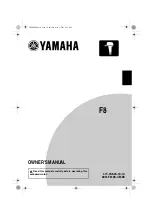DLT100AGEVB
http://onsemi.com
4
10. Slowly increase the load by turning the “STEP”
pot clockwise until you reach the desired load step.
11. Once the desired load step is obtained you can
adjust the load’s trailing and leading edge slew
rate by adjusting the function generator’s square
wave output voltage level. Increase the voltage to
increase the slew rate. DO NOT exceed 2 V pk-pk
or the DLT’s amplifier may be damaged!
12. Adjust the square wave’s frequency to test at
different load repetitive rates.
13. The function generator’s output can be changed to
‘Pulse’ to test at different duty cycles. At higher
load switching frequencies with slower slew rates
it may be necessary to increase the generators duty
cycle to allow for full load step swing.
External Static Load
While the DLT is capable of providing a static load it is
advisable to use a separate load in parallel if higher loads are
needed. If there isn’t enough room to connect a second
external load directly to the board being tested (which is the
best practice) it may be connected directly to the DLT at pins
PWR2 & PWR3. However, any additional current pulled
through these points will decrease the load current that the
DLT is capable of drawing due to additional heat generated
through the board.
Thermal Considerations
The DLT is equipped with a fan which when running at
full speed, is capable of providing enough cooling to
dissipate roughly 55 W total power. It is recommended that
the cooling fan be run at full speed. The DLT is also equipped
with thermal protection circuits on both the high and low
load banks. If the operational board temperature reaches the
predetermined point the DLT will stop drawing any load
until the temperature drops. Once it drops to a safe
temperature the DLT will again start drawing load. During
the time that the DLT is in thermal protection the
corresponding “High” or “Low” drive “HOT” LED will
light.


















